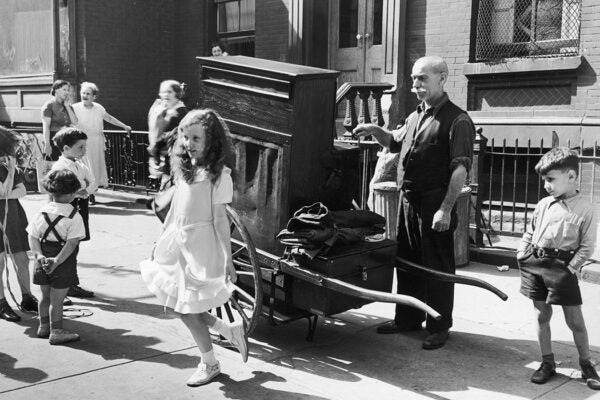The Americans with Disabilities Act (ADA) was signed into law in 1990. In the following decade, depictions and discussions of how people used the groundbreaking act proliferated the airwaves. Attorney Cary LaCheen examined more than eighty news or “news magazine” programs that aired on television and radio in 1998 to determine what the coverage revealed “about media and public assumptions about disability rights and the ADA.”
LaCheen explains that many of the broadcasts focused on lawsuits targeting entities that may have been in violation of the ADA. She argues that this emphasis on litigation “is a problem for the disability rights community and contributes to backlash against the ADA because it sends a message that all the disability community does is sue.” She notes that many of the lawsuits were brought by private attorneys, “and thus the disability rights community doesn’t choose the parties, legal theories, venue, or decisions to appeal and seek certiorari in these cases.”
She identifies other problems with the way the ADA was handled by mass media that year as well, noting that people with some types of disabilities were portrayed—in both news coverage and fictional representations—as being particularly “undeserving” of access. As she explains,
In the mind of the public and the media, there are “legitimate” and “worthy” disabilities, usually those visible to the naked eye, such as mobility impairments and blindness. At the other end of the spectrum, there are the “undeserving disabled,” people who are thought to be to blame for their conditions.
Overweight people, those living with alcoholism and substance abuse issues, psychiatric disabilities, multiple chemical sensitivities, learning disabilities, and those who have myalgic encephalomyelitis/chronic fatigue syndrome were styled as such. (The ADA protects people with mental illnesses).
LaCheen offers several examples of negative depictions of an “undeserving disabled” person in popular television programs. For instance, in “King-Size Homer,” an episode from the seventh season of The Simpsons, Homer attempts to gain a significant amount of weight so that his employer would allow him to work from home. Much of the humor of the episode depends on Homer’s reading of a book called Am I Disabled? for inspiration. The episode also promotes the meritless claim that some disabled people “evade personal responsibility for their own conduct.”
LaCheen uses portrayals of obesity to address the myth that if a condition is common, it can’t be a disability. “The more widespread a physical or mental condition, the more difficult it is for the media and the public to view it as a disability,” she notes. The public and media skepticism about ADA cases related to obesity case occur
not just because our society blames people with obesity for their condition, but also because obesity is so common in the United States that it is fast becoming the rule rather than the exception. […] The corollary of this phenomenon is that the more widespread a treatment for a condition, the more difficult it is for the media and the public to view it as an accommodation for a disability.
These assumptions partially explained the media’s limited understanding of the ADA cases on which they did report, including Sutton v. United Airlines (acute visual myopia), Murphy v. United Parcel Service (high blood pressure), and Albertsons Inc v. Kirkingburg (vision problems of any degree), all of which reached the Supreme Court.
“All three cases raised the question of whether the plaintiffs were individuals protected by the ADA,” LaCheen explains. “The media often ignored the legal relevance of this question, which was whether the plaintiffs, who were denied or fired from their jobs because of their physical conditions, had the right to sue to challenge these employment actions.”
She recommends a number of media strategies for the disability community to help improve the portrayal of both the ADA and disabled people in the media. For example, the community could try to shift media attention to the problems and effects of discriminatory treatment, minimizing discussions of whether particular plaintiffs “deserve” legal protections. Describing how a building’s lack of access affects a group of people may get more empathy from the public, especially if they’re made aware of specific issues before an ADA lawsuit is filed.
Weekly Newsletter
Another possible approach would to personalize the issue. As the 2021 BBC documentary Sickness and Lies shows, the idea that someone could be contributing to their own disability or even “faking” it persists. But what if it was your own cousin who had been fired because they needed to take breaks to test her blood sugar or eat?
“If we personalize the issue and get people to focus on [discriminatory] conduct, perhaps we can move the debate away from the question of whether someone is ‘disabled enough’ to be protected by the ADA,” suggests LaCheen.







